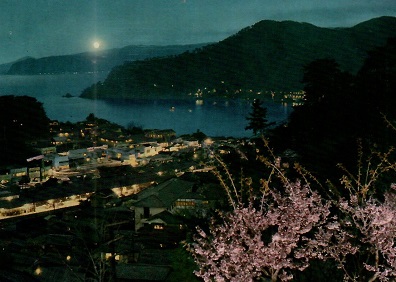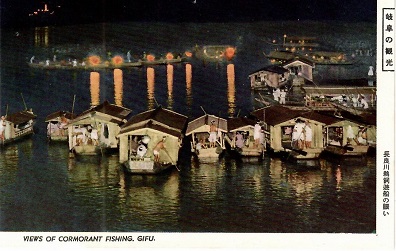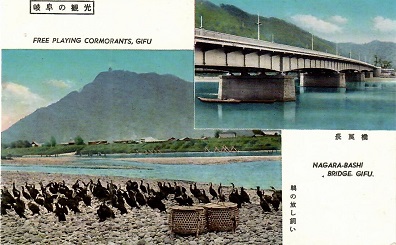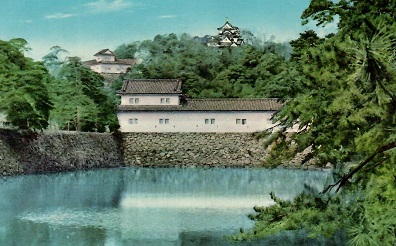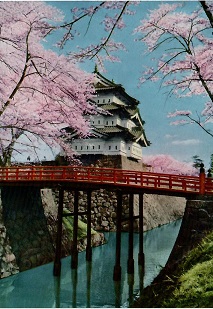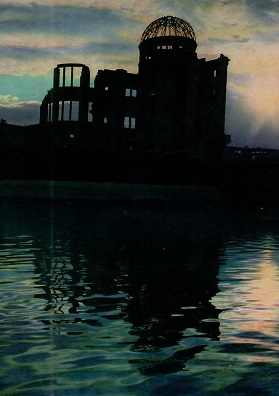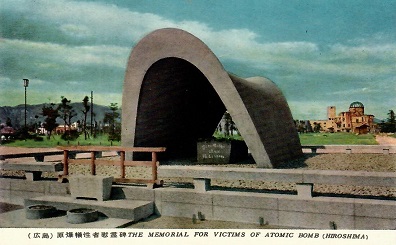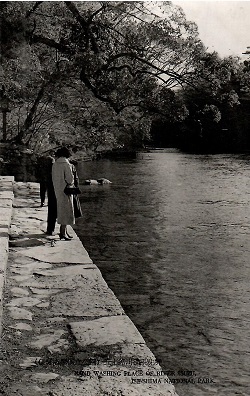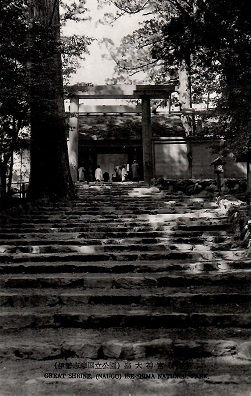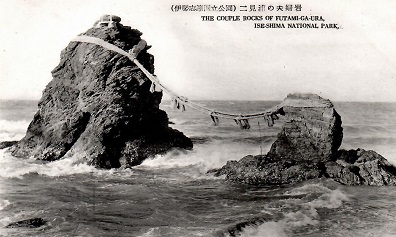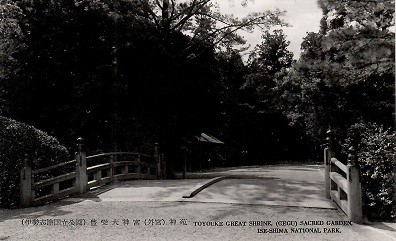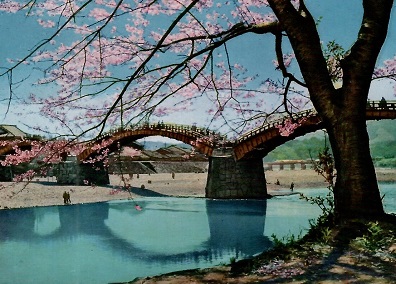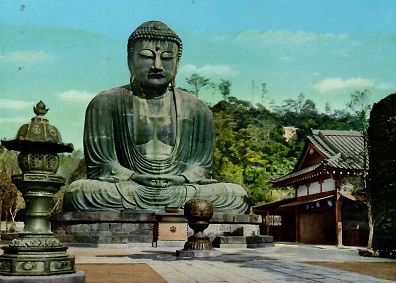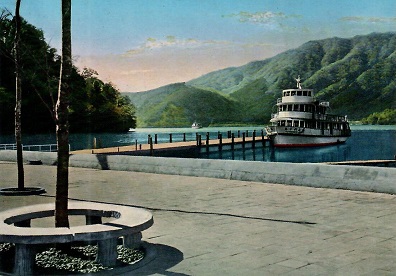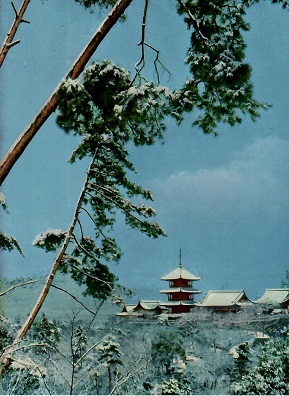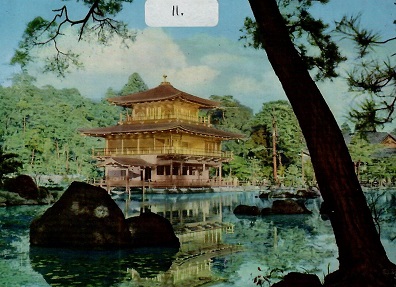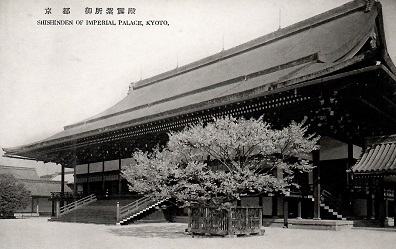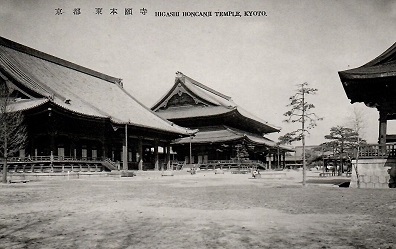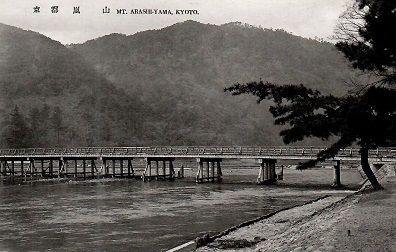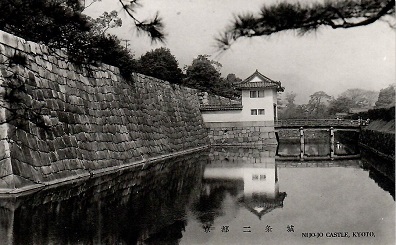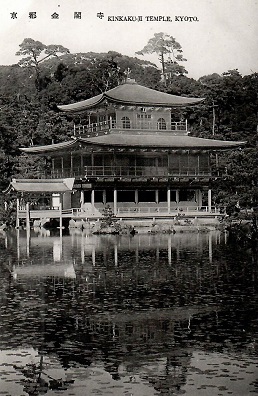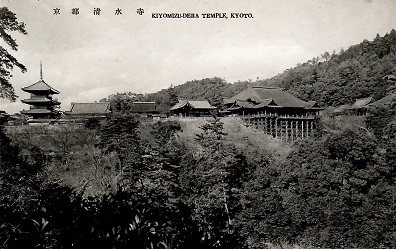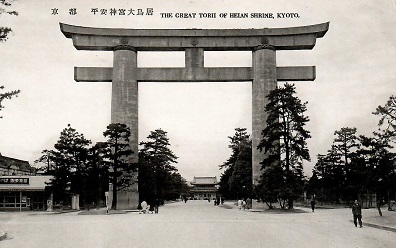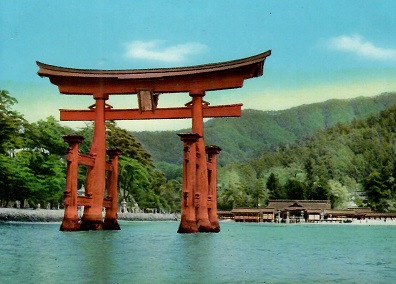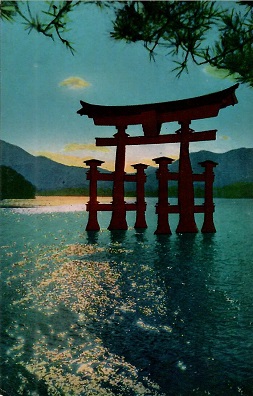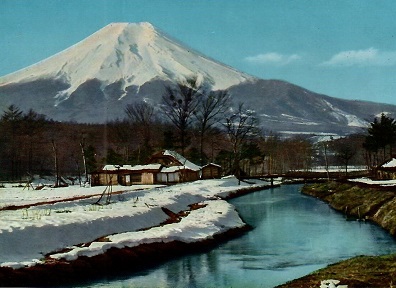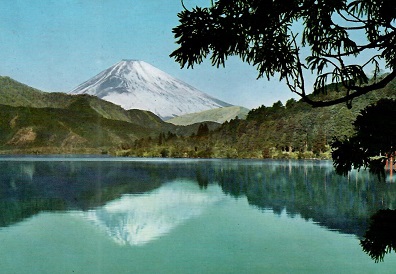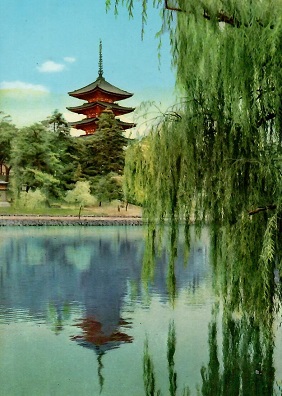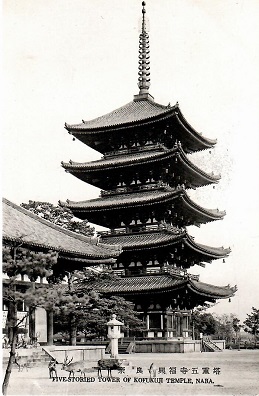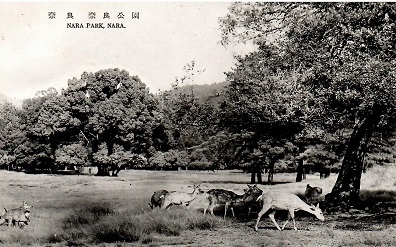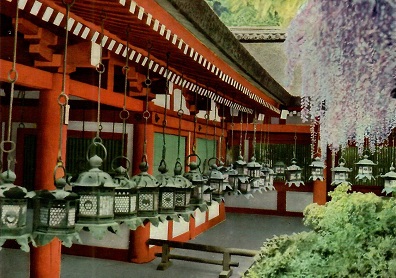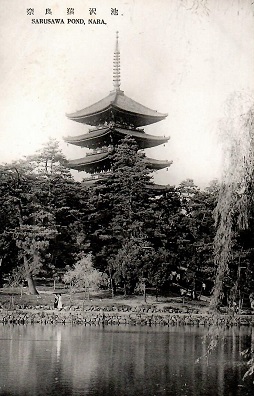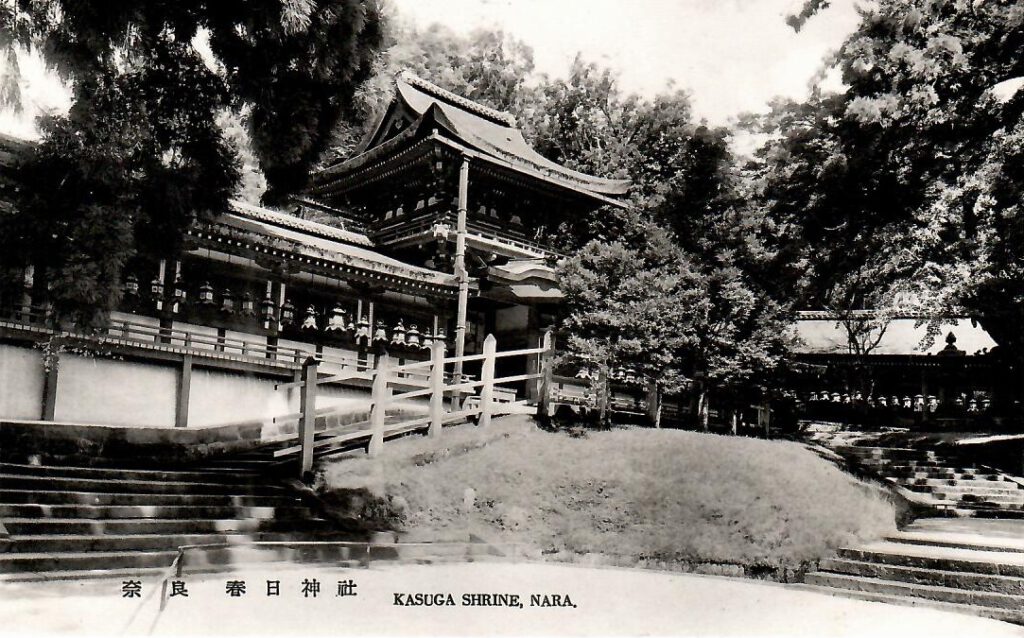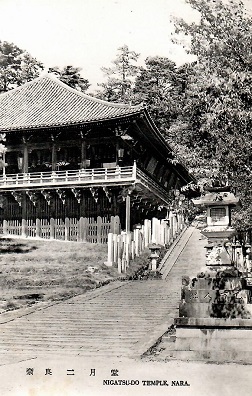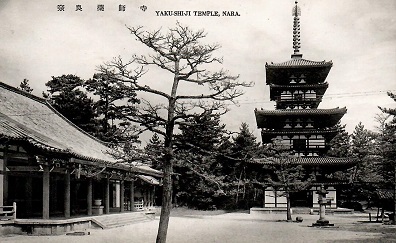-
Moonlight View at Atami
Unused, older card from this seaside resort. Grade: 1
-
Gifu, Views of Cormorant Fishing
There’s a lot of story, culture, and history behind this unused old postcard. Worth Googling if you don’t already know. Grade: 1
-
Gifu, Cormorants and Nagara-Bashi Bridge
Apparently two of Gifu’s claims to fame, on this unused old postcard. Grade: 1
-
Hakone Ropeway
This unused card is from roughly the 1970s. Grade: 1
-
Views of Castle Tower from Irohamatsu
Though unused, there’s a further short description written near the printed caption. Grade: 3
-
Hirosaki Castle at Spring
Unused 1970s (or any)-era card, captioned in English. Grade: 1
-
Hiroshima, The Dome at Dawn
Unused older card captioned broadly in Japanese and briefly in English. Grade: 1
-
Hiroshima, The Memorial for Victims of Atomic Bomb
Unused card, captioned exactly as you can see. Bear in mind the narrow gap between the event and the production of the postcard. Grade: 1
-
Ise-Shima National Park, Hand Washing Place of River Isuzu
Old and unused B&W card, bilingual Japanese/English on the front and Japanese on the reverse. Ise-Shima National Park feels like a living museum. Locals are proud of their unusual fishing methods, such as the ama divers, who help manage and preserve seaweed beds and other biological resources by observing strict rules relating to fishing methods and catch sizes. Just not in the river. Grade: 1
-
Ise-Shima National Park, Great Shrine (Nai-gu)
Unused old B&W postcard. Bilingual captions, Japanese/English. Grade: 1
-
Ise-Shima National Park, the Couple Rocks of Futami-ga-ura
Meoto Iwa (夫婦岩), or Married Couple Rocks, are a kind of rock formation seen as religiously significant in Shinto, representing the union of the creator kami, Izanagi, and Izanami. The rocks, therefore, celebrate the union in marriage of man and woman. The most famous pair is at Futami Okitama Shrine in Futami-ura, joined by a shimenawa (a heavy rope of rice straw). The shimenawa, composed of five separate strands, each weighing 40 kg, must be replaced several times a year in a special ceremony. The larger rock, said to be male, has a small torii at its peak. At dawn during the summer, the sun appears to rise between the two rocks. Mount Fuji is visible in the distance. At low tide, the rocks are not separated by water. We tell you all this because this scene is especially popular on older postcards like this ancient B&W unused example. Grade: 1
-
Ise-Shima National Park, Toyouke Great Shrine, (Gegu) Sacred Garden
Unused old B&W card with bilingual captions. Grade: 1
-
The Bridge of Kintai at Iwakuni
The Kintai Bridge is a historical wooden arch bridge in Yamaguchi Prefecture. The pedestrian bridge was built in 1673, spanning the Nishiki River in a series of five wooden arches and without the use of any nails. The bridge is located near Mt. Yokoyama, with Iwakuni Castle on top of that. This older, unused card has a nice English (and brief Japanese) caption. Grade: 1
-
“Picture Island” Near Kamakura
We’re showing you this unused old postcard’s English caption, though the real name of the island is Enoshima, off the Shōnan coast of Kanagawa Prefecture. It’s known for the Enoshima Shrine, with statues honoring Benzaiten, the Buddhist goddess (called Benten, Goddess of Luck, in the caption). The Iwaya Caves feature tidal pools and Buddhist statues; popular mainland beaches are nearby. Grade: 1
-
Kamakura, The Great Buddha
This unused old postcard has a bilingual caption whose English part describes the photo as well as we could: “‘Daibutsu’ has stood rain and wind since 1495 in the ground of Kotokuin Temple.” Grade: 1
-
Kojiri Pier
Not much of an English caption but much more in Japanese, on this unused old card. The pier is on Lake Ashi and the jumping-off (and ending) point for lake cruises. Grade: 1
-
Kyoto, Kiyomizu Temple
“A panoramic view of the city can be had” from the wooden platform on a cliff bearing the temple featured on this very old, unused postcard, with Japanese and longer English captions. Grade: 1
-
Kyoto, Kinkakuji Temple
This old, unmailed card would be in perfect condition were it not for the sticker on the top front. Grade: 5
-
Kyoto, Sanju-Sancen-do Temple
As usual, transliterating Japanese or Chinese characters (or Thai, or anything non-Roman, for that matter) can lead to confusion. Google tells us there’s a different spelling now, and adds even more: “Sanjusangendo (三十三間堂, Sanjūsangendō) is the popular name for Rengeo-in, a temple famous for its 1001 statues of Kannon, the goddess of mercy. The temple was founded in 1164 and rebuilt a century later after the original structure had been destroyed in a fire. Measuring 120 meters, the temple hall is Japan’s longest wooden structure. The name Sanjusangendo (literally “33 intervals”) derives from the number of intervals between the building’s support columns …” Not really too much information, and we were struck by the starkness of this unused old postcard. Grade: 1
-
Kyoto, Shishinden of Imperial Palace
Among the many reconstructed buildings in Kyoto’s Imperial Palace, the most prestigious is the Shishinden (Hall for State Ceremonies), first built in the architectural style of the Heian Period (794-1185) to accommodate the Enthronement Ceremony. Enthronement Ceremonies of Emperors Meiji, Taishō, and Shōwa were held in the present hall, and the Takamikura Imperial Throne for the Emperor as well as the Michodai August Seat of the Empress used for the ceremony are inside. And as for now, some important court events such as the Kyoto Imperial Palace Tea Party hosted by the Emperor and Empress sometimes are celebrated here. The palace also receives state guests and introduces Japanese court culture to foreign dignitaries. The postcard itself is a few decades old, and unused. Grade: 1
-
Kyoto, Higashi Honcanji Temple
More minor transliteration issues. Higashi Hongan-ji (東本願寺), or, ″the Eastern Monastery of the Original Vow″, is one of two dominant sub-sects of Shin Buddhism, the other being Nishi Honganji (or, ‘The Western Temple of the Original Vow’). It is also the name of the head temple of the Ōtani-ha branch of Jōdo Shinshū in Kyoto, which was rebuilt in 1895 after a fire burned down the previous temple. As with many sites in Kyoto, these two complexes have more casual names and are known affectionately as Onissan (お西さん, Honorable Mr. West) and Ohigashisan (お東さん, Honorable Mr. East). And, here’s an unused old postcard with Honorable Mr. East. Grade: 1
-
Kyoto, Mt. Arashi-yama
Arashiyama (嵐山, Storm Mountain) is a district on the western outskirts of Kyoto, and also refers to the mountain across the Ōi River, which forms a backdrop to the district. Arashiyama is a nationally designated Historic Site. This is an old, unused, B&W postcard. Grade: 1
-
Kyoto, Nijo-jo Castle
Nijo Castle (二条城, Nijōjō) was built in 1603 as the residence of Tokugawa Ieyasu, the first shogun of the Edo Period (1603-1867). His grandson Iemitsu completed the palace buildings 23 years later and further added a five story castle keep. After the Tokugawa Shogunate fell in 1867, Nijo Castle was used as an imperial palace before being donated to the city and opened to the public as a historic site. Its palace buildings are arguably the best surviving examples of castle palace architecture of Japan’s feudal era, and the castle was designated a UNESCO world heritage site in 1994. This unused BB&W cad long predates that designation, though. Grade: 1
-
Kyoto, Kinkaku-ji Temple
Sometimes a seemingly plain postcard masks an extraordinarily colourful story. We often refer to information from Wikipedia (and why didn’t we have Wikipedia when we were in school?), but almost never direct you to the entire entry as we are doing now: https://en.wikipedia.org/wiki/Kinkaku-ji. We aren’t certain when this unused old B&W postcard was produced — we’re guessing 1960s but don’t know — though the extensive Japanese caption on the reverse might tell you more. Grade: 1
-
Kyoto, Kiyomizu-dera Temple
Unused, old B&W postcard. Grade: 1
-
Kyoto, Great Torii of Heian Shrine
The Heian-jingu Shrine (平安神宮) is a Shinto shrine located in Sakyō-ku and is ranked as a Beppyō Jinja (別表神社) (the top rank for shrines) by the Association of Shinto Shrines. It is listed as an important cultural property of Japan, though not as old as many, and also having been rebuilt due to one of the several fires plaguing Japanese religious structures. This is an older, black-and-white, unused postcard. Grade: 1.
-
Miyajima, “Big Torii”
The Torii itself, on this older and unused card, is just one element of a larger property: Itsukushima Shrine (厳島神社 (嚴島神社) is a Shinto shrine on the island of Itsukushima (popularly known as Miyajima), best known for this “floating” torii gate. It is in the city of Hatsukaichi … The shrine complex is listed as a UNESCO World Heritage Site, and the Japanese government has designated several buildings and possessions as National Treasures. For the postcard, Grade: 1
-
Sunset view at Big Torii, Miyajima Island
An appealing and artistic photo on an unmailed card that has a short extra identifier written under the reverse caption. Grade: 3
-
Mt. Fuji at the Country
Somewhere, someone exists who only collects Fuji-san postcards. Is it you? Do you have this unused older example? Grade: 1
-
Mt. Fuji from Lake Ashi
Mid-20th-century, unused card in excellent condition. Grade: 1
-
Nara, Sarusawa Pond and Pagoda
Sarusawa-ike is an artificial pond dug in 749 in the grounds of Kofukuji Temple. Legend has it that during the Nara Period a court maid drowned herself in the lake after she fell out of favour following a love affair with an emperor. Uneme Shrine, a sub-shrine of Kasuga Grand Shrine, is said to have been built to pray for her soul (Uneme were court attendants). The shrine’s torii is turned away from the lake to avoid the soul of the dead girl having to gaze on its waters. To be more contemporary, Nara Park — where this is — “is said to be the most charming Park in Japan”. We are in no position to dispute that. Unused, old, attractive postcard. Grade: 1
-
Nara, Five-Storied Tower of Kofukuji Temple
As we make our way through listing Japanese temples, we realise they are all important and distinctive in unique ways — except for one: they all seem to have burned down at one time or another. Kōfuku-ji was established in 669 by Kagami-no-Ōkimi (鏡大君), wishing for her husband’s recovery from illness. Its original site was in Yamashina (present-day Kyoto). In 672, the temple was moved to Fujiwara-kyō, the first planned Japanese capital, then in 710, it was dismantled for the second time and moved to its present location, on the east side of the newly constructed capital, Heijō-kyō, today’s Nara. The temple was damaged and destroyed by civil wars and fires many times and was rebuilt as many times as well, although finally some buildings were never reconstructed and are missing today. The rebuilding of the Central Golden Hall was completed in 2018. Now, for the postcard: old, B&W, unused, and Grade: 1
-
Nara Park
One of several dedicated websites for Nara sweetly describes the Park like this “Alongside Naramachi and Nishinokyo, Nara Park is one of the must-see areas in Nara City. The vast area covers 660 hectares and is renowned for its free-roaming deer and world famous temples. Feeding the deer is an attraction in itself and special crackers are on sale all around the park. For human refreshments, there are traditional tea houses as well as kiosks selling snacks and souvenirs.” Or, we suppose, humans could eat what the deer do — but not vice-versa. Unused old B&W postcard. Grade: 1
-
Nara, Horuji Temple, The Whole View
Hōryū-ji (on the postcard: Horuji) is a Buddhist temple that was once one of the powerful Seven Great Temples, in Ikaruga, Nara Prefecture. Its full name is Hōryū Gakumonji, or Learning Temple of the Flourishing Law, the complex serving as both a seminary and monastery. This unused and quite old B&W postcard has an extensive Japanese caption on the reverse. Grade: 1
-
Nara, Kasuga Shrine, Lanterns
Kasuga-taisha is a Shinto shrine of the Fujiwara family, established in 768 CE and rebuilt several times over the centuries. The interior is famous for its many bronze lanterns, as well as the many stone lanterns that lead up the shrine. The old, unused postcard’s English caption recounts some of these details. Grade: 1
-
Nara, Sarusawa Pond
Tranquil view (of course) on this unused, very old B&W postcard. Grade: 1
-
Nara, Kasuga Shrine
Unused B&W postcard. As with others in this series, there’s a significant caption in Japanese on the reverse. Grade: 1
-
Nara, Nigatsu-do Temple
On the side of Mount Wakakusa, Nigatsu-do (“The Hall of the Second Month”) overlooks Nara and provides good views of its ancient structures for visitors. Nigatsuo-do’s history is interesting: according to legend, the priest Jicchu saw the Buddhist deity Bosatsu practicing religious training in a waterfall’s cave in eastern Nara in approximately the year 750. Jicchu decided to build the original Nigatsu-do so that this training could be continued in the human world. Jicchu then performed a ceremony to which he invited 13,700 gods. One of the gods, Onyu-myojin, was late to the ceremony. To apologise, he offered scented water from the Onyu River, and the water suddenly sprung up from where the god stood. This event marks the origin of Omizutori, the “Water-Drawing” festival that has taken place annually since the year 752, and at Nigatsu-do since 772. (This is what we mean when we say “We tell the stories.”) Here’s an unused postcard from the mid-20th century. Grade: 1
-
Nara, Yaku-shi-ji Temple
Yakushi-ji is one of the most famous imperial and ancient Buddhist temples in Japan, and was once one of the Seven Great Temples of Nanto, located in Nara. The temple is the headquarters of the Hossō school of Japanese Buddhism. So while it might be true for those of us who don’t do our homework, here’s proof that not all temples are Shinto. Unused postcard from mid-20th century. Grade: 1
-
Nara, Great Buddha Edifice of Todaiji Temple
Tōdai-ji is a Buddhist temple complex that was once one of the powerful Seven Great Temples, in Nara. Though it was originally founded in the year 738 CE, Tōdai-ji was not opened until the year 752 CE. And when background information is presented like that, it’s easier to understand why our eyes glaze over quickly — meaning no disrespect whatever to the temple itself. Unused old postcard. Grade: 1

